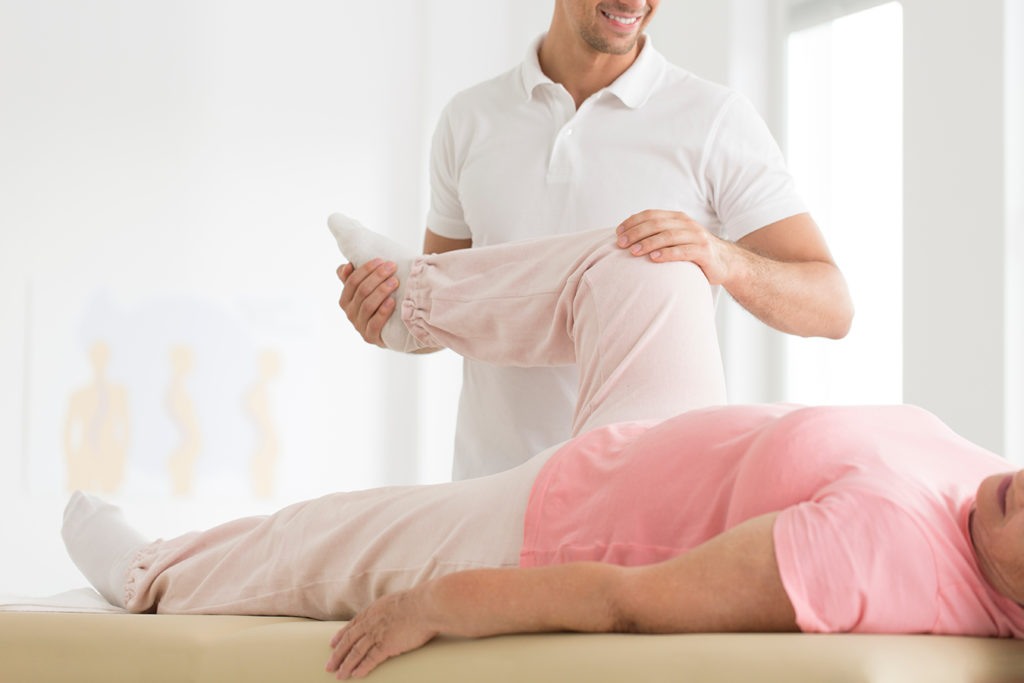By Judith Graham | March 28, 2019
Older adults and their families often wonder: Where’s the best place to recover after a hip or knee replacement — at home or in a rehabilitation facility?
Increasingly, the answer appears to be home if the procedure is elective, friends and family are available to help and someone doesn’t have serious conditions that could lead to complications.
This trend is likely to accelerate as evidence mounts that recuperating at home is a safe alternative and as hospitals alter medical practices in response to changing Medicare policies.
The newest data comes from a March study in JAMA Internal Medicine of 17 million Medicare hospitalizations of people from 2010 to 2016. All the patients were older adults and went home or to a skilled nursing facility after a medical procedure or a serious illness. Knee and hip replacements were the most common reason for these hospitalizations.
People who were sent home with home health care services demonstrated the same level of functional improvement as those who went to a skilled nursing facility (assessments examined their ability to walk and get up and down stairs, among other activities), the study found. And they were no more likely to die 30 days after surgery (a very small percentage in each group). Overall, costs were significantly lower for patients who went home, while hospital readmissions were slightly higher — a possible signal that home health care services needed strengthening or that family caregivers needed better education and training.
“What this study tells us is it’s certainly safe to send people home under many circumstances,” said Dr. Vincent Mor, a professor of health services, policy and practice at Brown University’s School of Public Health who wrote an editorial accompanying the study.
The new report expands on previous research that came to a similar conclusion. In 2017, experts from New York City’s Hospital for Special Surgery published a study that examined 2,400 patients who underwent total knee replacements and were discharged home or to a skilled nursing facility for rehabilitation between May 2007 and February 2011. There were no differences in complication rates at six months or in functional recovery and patient-reported outcomes at two years.
“As a result of these findings, we are encouraging all of our patients to consider home discharge after TKA [total knee replacement],” the authors wrote.
Carol Levine, Director of the United Hospital Fund’s Families and Health Care project, who has had two hip replacements.
The year before, researchers at New York University reported in JAMA Internal Medicine that from 2009 to 2012 and 2013-14, discharges to rehabilitation facilities fell from 68 to 34 percent for patients undergoing hip and knee replacements, from 71 to 22 percent for patients with cardiac valve replacement surgeries, and from 40 to 30 percent for patients who’d had spinal fusion surgery. Instead, more people were sent home to recover. During this period, NYU Langone Medical Center assumed financial responsibility for “episodes of care” for joint replacements that include the post-hospital recovery period — a policy that Medicare is now promoting.
Diane Rubin, 67, who lives on Long Island, had a hip replacement at the NYU medical center in January. Before the surgery, she got a list of things she’d need to do to prepare for her recovery; afterward, a nurse and physical therapist visited her at home regularly for about three weeks. “I was more comfortable recuperating at home and I’ve had absolutely no complications,” she said.
How do physicians decide where to send patients? “In general, we tend to send patients to skilled nursing facilities who are older, sicker, more deconditioned after surgery, and who have no spouse or caregiver, fewer resources and little social support,” said Dr. Leora Horwitz, a co-author of that study and associate professor of population health and medicine at New York University School of Medicine.
Though it’s widely believed that people who live alone might not do well going home, last year researchers at The Rothman Orthopaedic Institute at Thomas Jefferson University in Philadelphia published research showing that isn’t necessarily the case. At their institution, patients are assigned a nurse navigator who provides assistance before and after hip or knee replacements. Patients who lived alone stayed in the hospital longer and received more home health care services than those who lived with others.
When they recuperated at home, the Rothman Orthopaedics patients didn’t have higher rates of medical complications, returns to the hospital or emergency room visits than those who went to rehabilitation facilities. Nearly 90 percent of people who lived alone said they’d again choose a home discharge.
Dr. William Hozack, a co-author of the study and professor of orthopedic surgery at Thomas Jefferson University Medical School, acknowledged that patients who go to rehabilitation are probably sicker and more debilitated than those who go home, potentially biasing research results. Still, practices have changed considerably. Today, he and his colleagues send 95 percent of patients who get hip and knee replacements home to recover, instead of directing them to institutions.
People shouldn’t underestimate how much help they may require at home, especially in the first few weeks after surgery, said Carol Levine, director of the United Hospital Fund’s families and health care project, who has had two hip replacements. The potential downsides to going home include a greater burden on caregivers and the possibility that complications won’t be identified as quickly, needs will go unmet if friends and family can’t pitch in, and people won’t follow through on recommended rehabilitation regimens. And outcomes may not be as favorable if services that support people at home aren’t readily available.




